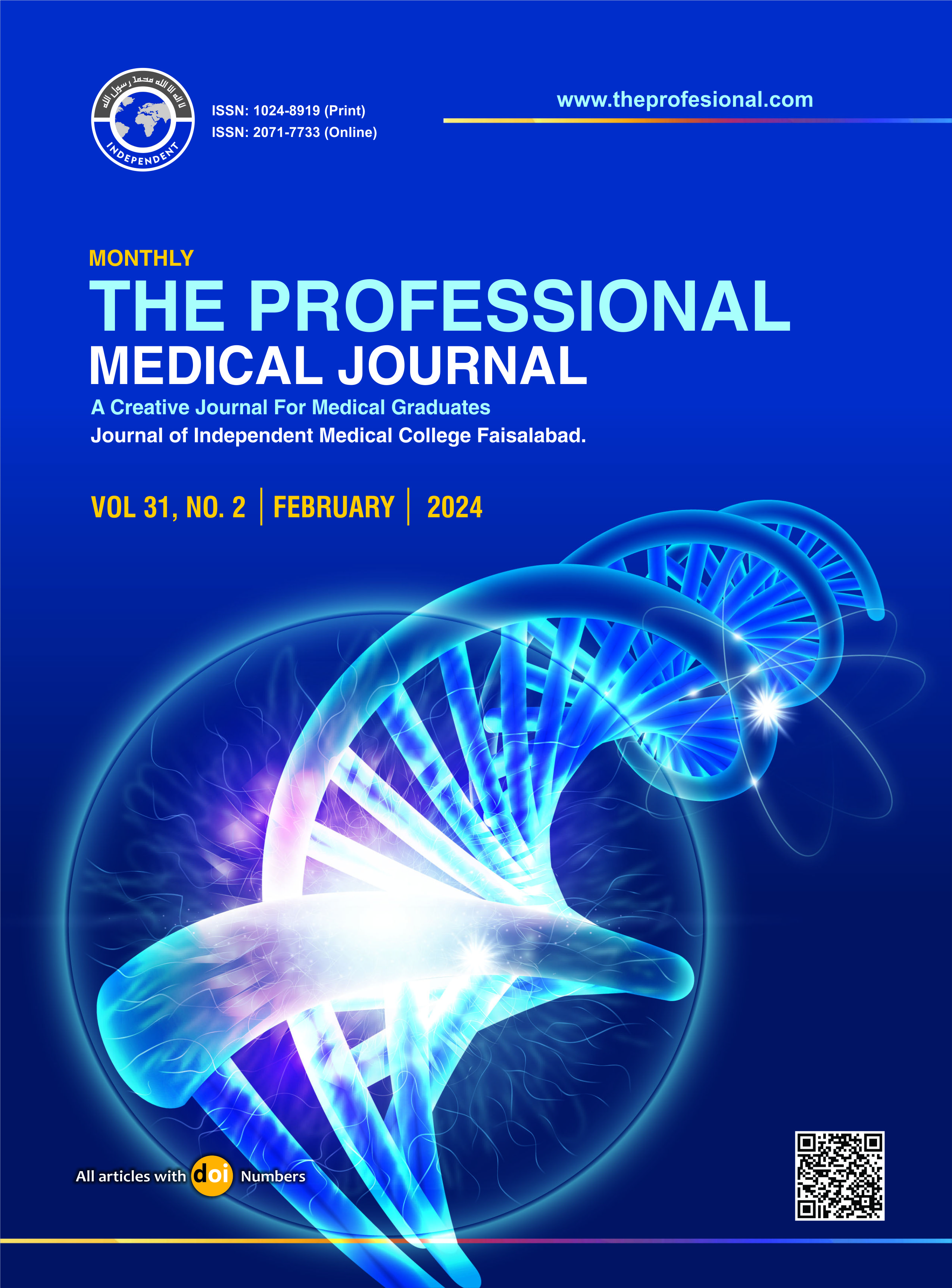Hepatitis D seroprevalence: An alarming situation and war without weapon.
DOI:
https://doi.org/10.29309/TPMJ/2024.31.02.7870Keywords:
Hepatitis D, HDV, PCR, RNA, SeroprevalenceAbstract
Objective: To determine the seroprevalence of HDV in HBs Ag positive patients and the burden of true viral hepatitis infection (viremia) as evidenced by detectable either HBV DNA and/or HDV RNA (single or dual infection). Study Design: Cross-sectional Observational Study. Setting: Al-Tibri Medical College Hospital, Karachi, and OPD Saylani Welfare Trust, Karachi. Period: August 2021 to July 2022. Material & Methods: All patients of both genders with HBsAg positivity were included in the study. All included subjects underwent a process of evaluation through history, physical examination, baseline or specific laboratory tests of Anti HDV Ab and PCR for detection of HBV DNA and HDV RNA, if applicable, followed by classification of subjects as follows: group I: Only HBs Ag positive (no active infection), group II: HBs Ag positive along with HBV DNA detected by PCR (HBV infection), group III: HBs Ag and Anti HDV Ab positive but no HBV or HDV viremia (no active infection), group IV: Both HBs Ag and Anti HDV Ab positive with HBV viremia (HBV infection), group V: Both HBs Ag and Anti HDV Ab are positive for HDV viremia (HDV infection), and group VI: Both HBs Ag and Anti HDV Ab positive with both HBV and HDV viremia (Dual infection). Results: A total of 237 subject’s data were analyzed with a mean age of 29.03±9.262 years (range of 12 to 66 years), with males 143 (60.3%) and females 94 (39.7%), but dual infection was more prevalent in females, but statistically these differences turned out to be insignificant (p-0.061). According to age group, almost 89.5% of subjects were below the age of 40, while only 10.5 % were >40 years of age. Another significant finding in our results was that all 11 subjects in group VI (with dual viral infection) were under the age of 40 years. and this difference was statistically significant too (p 0.001), as shown in Table I. Conclusion: Our study highlighted that HDV is still prevalent in our part of the world and that it mainly affects younger age groups. Hence, it demands an urgent, extensive screening campaign of the masses to assess the exact HDV burden and offer preventive measures, including a vaccine against HBV. Otherwise, due to deficient treatment options, we have to lose the battle because this is the war and we are without weapons.
Downloads
Published
Issue
Section
License
Copyright (c) 2024 The Professional Medical Journal

This work is licensed under a Creative Commons Attribution-NonCommercial 4.0 International License.


